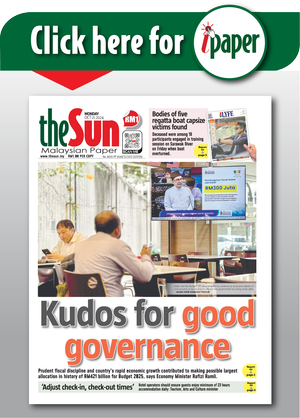FOR some time now, Malaysians have watched in alarm as bags of smuggled wildlife evaded detection at two of its busiest airports, only to be discovered at destination airports across India.
Just over a week ago, eight wild animals were discovered in the luggage of two passengers arriving in Chennai from Kuala Lumpur. Four of these animals were a rare species of gibbon, found only in Borneo.
Tragically for the two endangered eastern grey gibbons, the rescue came too late – they had already died by the time they were found.
This type of smuggling from both terminals of the Kuala Lumpur International Airport (KLIA) to various locations in India has been persistent and frequent, with some shipments involving large quantities and a wide range of species.
To illustrate the point, consider that in the last four months of
2024 alone, an estimated 10,000 live tortoises and turtles, endangered primates such as siamangs and agile gibbons, as well as bats, iguanas and bearded dragons – wildlife that were illicitly trafficked via flights departing Malaysia – were seized at airports in India.
Traffic – an NGO dedicated to wildlife conservation – warmly welcomes the recent statements by the ministers of natural resources and environmental sustainability, (NRES) and transport on this critical issue.
Actions to address the problem must be fast-tracked if, as reported by local and Indian media, Malaysia continues to attract Indian travellers due to favourable tourism policies and increased flight connectivity.
This is not just a wildlife conservation issue; it also involves the abuse of Malaysia’s airports and airlines for criminal activity. It raises concerns about the safety of airports and travellers, especially when the smuggled wildlife is venomous or dangerous, as well as public health risks, as wildlife can carry diseases.
Above all, it is about Malaysia risking an unsavoury reputation as an easy gateway for wildlife trafficking. While the country has achieved some enforcement successes, Traffic applauds the authorities for their recent busts, including the seizure of 4,300 live baby pig-nosed turtles bound for Vietnam in February and five Asian koels destined for Indonesia earlier this month. The latter incident led to a fine of RM50,000 for the offender.
Discoveries of wildlife smuggling incidents between Malaysia and India have occurred at Indian airports after wildlife-filled bags slipped past checks in Malaysia.
This is why NRES Minister
Nik Nazmi Nik Ahmad’s acknowledgment of KLIA’s high risk for wildlife smuggling, along with Transport Minister Anthony Loke’s recognition of the issue’s severity, underscores Malaysia’s awareness of the vulnerabilities in monitoring and preventing wildlife trafficking through air travel.
Working to ensure that trade in wild species is legal and sustainable for the benefit of the planet, Nik Nazmi has pledged to intensify enforcement efforts, emphasising multiagency and internationally cooperative approaches to curbing wildlife crime.
Meanwhile, Loke announced upgrades to KLIA’s luggage screening machines and enhanced surveillance and screening processes. While these initiatives are encouraging, more must be done to dismantle the criminal networks exploiting KLIA.
To effectively address this issue, efforts must be coordinated, with government agencies and private companies across the transport chain working together.
Crucially, stronger leadership is needed from all parties involved in making airports safe for everyone. This requires a whole-of-government approach and the presence of a champion – an agency capable of bringing together stakeholders, fostering dialogue and driving long-term action and impact.
There are many gaps that facilitate illegal wildlife trade across Malaysia’s borders. This was one of the key challenges highlighted by the hundreds of law enforcement officers and transport sector professionals Traffic brought together last August to discuss wildlife trafficking at Malaysia’s land, sea and air borders.
The 30 agencies and transport sector organisations at the “Unite: Combatting Wildlife Trafficking at Malaysian Borders Roundtable” identified key areas to tackling the problem. They emphasised the need for: “Better intelligence-sharing mechanisms between enforcement agencies and with the transport sector, advanced scanning technology, cross-sectoral training programmes and collaboration, and more effectively holding traffickers legally and financially accountable.”
In his opening address at the roundtable, NRES Deputy Minister Datuk Seri Huang Tiong Sii warned that seizures alone cannot be considered a complete success as it showed the extensive removal of wildlife from nature. He wanted to see more enforcement agency-transport sector collaboration.
From our 30-year experience of researching wildlife crime and supporting wildlife crime fighting efforts in Southeast Asia, Traffic urges that surveillance protocols at key transport hubs be enhanced, and training for all enforcers and airport and airline operators on the latest trafficking tactics is continuous rather than sporadic.
Finally, we advocate for timely intelligence-sharing and joint investigations at the national and regional levels to ensure that smuggled wildlife does not take flight from Malaysia’s airports.
Kanitha Krishnasamy
Director
Traffic
Southeast Asia









